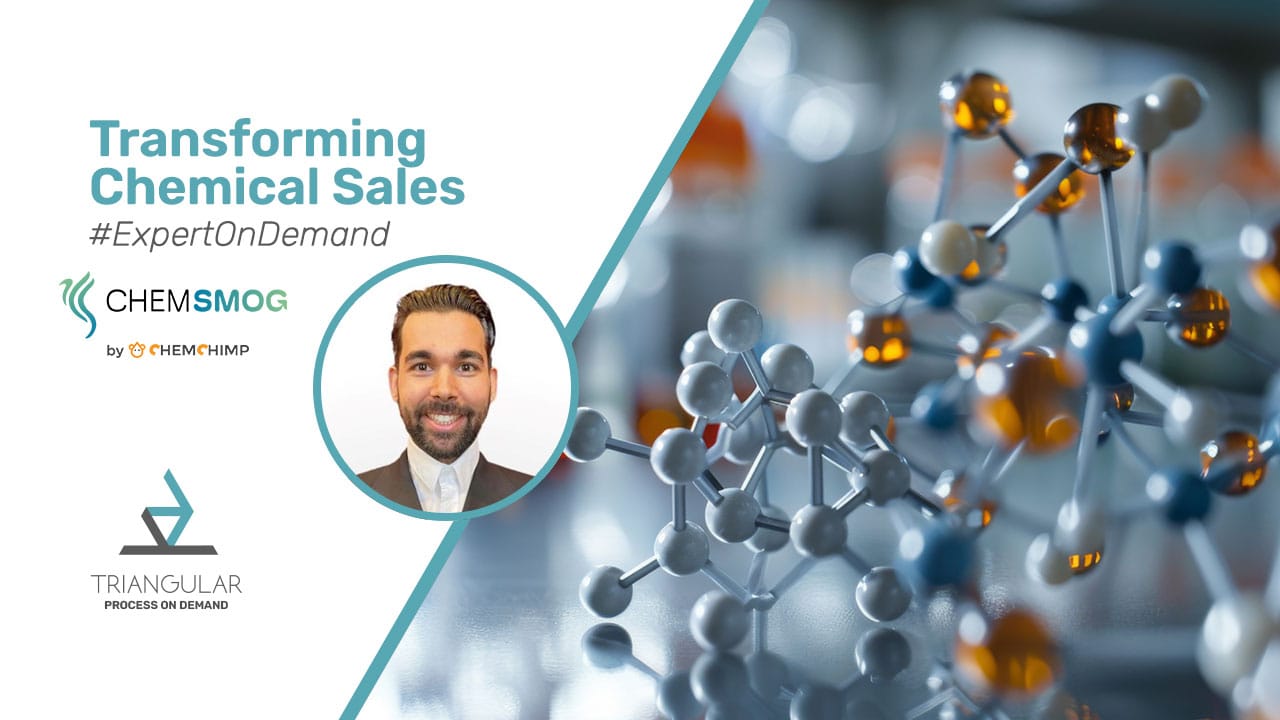Imagine you have a warehouse filled with chemicals. Some are in high demand, while others sit idle, gathering dust. These slow- and non-moving chemical inventories not only take up space but also represent lost opportunities for businesses and the environment.
A year ago, we met Tom Schoffelen, and we immediately connected over a shared vision: to help small and medium businesses thrive by tackling these industry challenges and minimizing waste.
Sylwia from our team spoke in August with Tom about ChemChimp and ChemSmog. Check out her 6 questions and his valuable insights.
Could you elaborate on the connection between ChemChimp and ChemSmog? Why these two names?
Tom: ChemChimp is our overarching digital ecosystem, created to launch solutions that drive a more sustainable and equitable chemical industry.
Within this ecosystem, we developed ChemSmog, a B2B marketplace designed specifically to sell slow- and non-moving chemical inventory.
Through ChemSmog, we aim to promote sustainability by reducing CO2 emissions and chemical waste, while also improving profitability for businesses.
What inspired the founding of ChemSmog, and how did you identify the need for a marketplace for slow and non-moving chemical stocks?
Tom: The idea behind ChemSmog came from a desire to reduce the unnecessary disposal of chemical products that still have value. Many chemicals are discarded simply because they are slow-moving, but we knew these materials could still serve a purpose.
To prevent waste, we needed to reach a broad audience quickly, which is how the idea of a digital marketplace was born. ChemSmog allows for easy information sharing and access to a large network of potential buyers.
Can you describe ChemSmog’s core business model and how your digital marketplace facilitates transactions?
Tom: Our business model is built on a no-cure-no-pay approach. This means that there’s no cost to use our platform unless a sale is successfully made, at which point we take a small commission.
This aligns with our mission to help reduce waste without imposing upfront costs on businesses. ChemSmog promotes available inventory online, taps into our extensive network, and, most importantly, leverages a proprietary data-driven sales approach to quickly identify and connect potential buyers with sellers.
What is your vision for the future of ChemSmog, and how do you see the platform evolving in terms of global reach and sustainability?
Tom: Our concept has already proven its effectiveness. Moving forward, our focus is on building strong partnerships with key industry players to accelerate market acceptance and gain trust.
Our vision is to make ChemSmog the go-to platform for chemical inventory management—a place where companies can scout opportunities and find sustainable solutions. We plan to expand globally by entering new markets and setting up local teams for customer support.
In terms of sustainability, we aim to measure and share the environmental impact of each sale with our customers, further contributing to global sustainability efforts.
What challenges have you faced in building ChemSmog, particularly with industry resistance and the logistics of connecting buyers and sellers digitally?
Tom: The chemical industry is typically risk-averse, and implementing changes in such a large, asset-heavy sector can be slow. One of our main challenges has been gaining industry acceptance and credibility.
In industries like automotive or fashion, the reuse and optimization of products are common, but this mindset isn’t yet as prevalent in chemicals. Another hurdle is convincing buyers to step outside their usual supply chain methods.
Purchasing from slow-moving inventory or through new platforms isn’t common practice yet, but with continued education and strategic partnerships, we’re confident we can shift perceptions and establish ChemSmog as a trusted business model.
How do you differentiate ChemSmog from other chemical marketplaces, and what unique value do you offer to small and medium enterprises (SMEs)?
Tom: We stand apart because ChemSmog is laser-focused on slow- and non-moving chemical inventory, rather than acting as a traditional chemical distributor. Our approach is agile, and we customize partnership agreements to meet our clients’ needs.
The no-cure-no-pay model is a key differentiator as well—vendors only pay a commission after a successful sale. For SMEs, the opportunity lies in accessing ready-to-collect materials at competitive prices, which can help reduce lead times and lower operational costs.
Triangular: Thank you Tom for the deep insight into your work and area of expertise.
Tom Schoffelen, General Manager ChemChimp s.r.l.

Tom holds a MSc degree in chemical engineering with more than a decade of experience in a corporate multinational environment.
In his role as general manager of ChemChimp he oversees the daily operations, defines long term strategy, drives new client expansion, and focuses on external business opportunities.
Get in touch with Tom on LinkedIn

